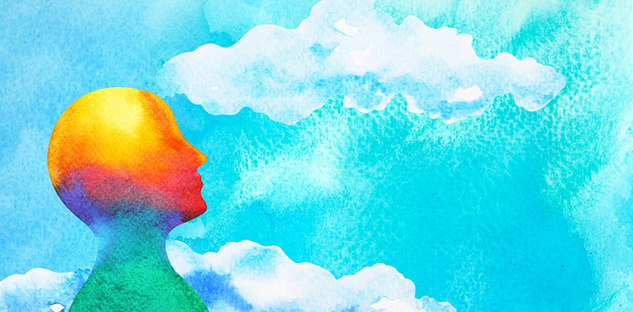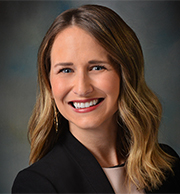
Mindfulness for School Counselor Care
By Sarah Kirk | January 2022

 We have all heard it: “We must take care of ourselves.” “Self-care isn’t selfish.” “We have to put on our own oxygen masks before we can put on someone else’s.” “We cannot pour from an empty cup.” Everywhere we turn we hear about the vital importance of self-care, especially in helping professions and as we enter our third year of a pandemic. The research supports the value of self-care. Practicing self-care results in being happier and healthier in mind, body and spirit. However, when self-care becomes another to-do list item and a reason to feel shame, it can do more harm than good. Often the idea of self-care becomes destructive because we do not know what it means to practice self-care in a way that does not include overindulging in food or drink, binge-watching TV, online shopping, gossip or toxic positivity. A quick scroll on social media can quickly remind you that the self-care industry (worth a whopping $450 billion) is all around us. But although the industry is booming, not all self-care comes with a price tag. Cultivating a personal mindfulness practice can let us engage in constructive, validating, and accepting self-care in a way that is always available, always free of charge and always invigorative.
We have all heard it: “We must take care of ourselves.” “Self-care isn’t selfish.” “We have to put on our own oxygen masks before we can put on someone else’s.” “We cannot pour from an empty cup.” Everywhere we turn we hear about the vital importance of self-care, especially in helping professions and as we enter our third year of a pandemic. The research supports the value of self-care. Practicing self-care results in being happier and healthier in mind, body and spirit. However, when self-care becomes another to-do list item and a reason to feel shame, it can do more harm than good. Often the idea of self-care becomes destructive because we do not know what it means to practice self-care in a way that does not include overindulging in food or drink, binge-watching TV, online shopping, gossip or toxic positivity. A quick scroll on social media can quickly remind you that the self-care industry (worth a whopping $450 billion) is all around us. But although the industry is booming, not all self-care comes with a price tag. Cultivating a personal mindfulness practice can let us engage in constructive, validating, and accepting self-care in a way that is always available, always free of charge and always invigorative.Author Elizabeth Lesser describes educators as “the first, first responders.” We are trying to save lives before they need saving. This is no easy task. And because of the unique role of educators, we often find ourselves caring more for others than for ourselves. However, prioritizing a personal mindfulness practice benefits us professionally and personally, resulting in better emotion management, deeper connections and improved self-regulation. In addition to the personal benefits, this process humanizes adults to our students while also producing better student outcomes. Research shows that when adults are mandated to teach students social/emotional skills but do not cultivate their own practice, students’ social/emotional development worsens. When both the adults and students work toward cultivating social/emotional skills, the positive results are plentiful. As first, first responders, cultivating a personal mindfulness practice benefits us all.
Jon Kabat-Zinn defines mindfulness as paying attention, on purpose, in the present moment, non-judgmentally. Mindfulness is more of a way of being than a checklist. It is less about the specific activities or interventions. Mindfulness is often described as our deepest, most sacred home. If you have never been there, it can be hard to find or even hard to believe it exists. Luckily, we have tools and maps to help us get there. Plus, once you have gone there, you can always return over and over to recharge as much as needed. A personal mindfulness practice can be the most reliable self-care – always available, free of charge and invigorative.
The techniques and teachings of Thich Nhat Hanh and Katherine Weare’s “Happy Teachers Change the World” are the tools and maps to help us on our mindfulness journey. These authors introduce eight core practices to cultivate a personal mindfulness practice:
- Getting in touch with the breath: our breath is our friend, always there for us
- Inviting and listening to the bell of mindfulness: allowing the bell to “bring you back home”
- Mindful sitting: strengthening our ability to settle, calm and relax the mind and body
- Mindful walking: enjoying the slowdown
- Awareness of the body and the breath: appreciation and awareness of the link between body and breath
- Mindful eating: increasing our appreciation and awareness for food
- Taking care of our emotions: recognizing the emotion, accepting the emotion, embracing the emotion, looking deeply into the emotion and gaining the insight that we are more than just an emotion
- Being together: being more present for others by sharing our thoughts and feelings openly, deep listening, loving speech, and reconciling conflicts with kindness, empathy, understanding and compassion
Selah. Selah is a word used in writing to direct readers to stop. Be still. Soak in what was just read. It is also used in music to direct the music director to silence the choir. Be still. Soak in the music. I hope you allow a moment to stop. Be still. Soak in what you just read. Think about one thing you can do to cultivate your personal mindfulness practice. It does not have to be a huge, life-altering change. It can be something small. Remember, mindfulness is always available, always free of charge and always invigorative. Selah.
Sarah Kirk is a school counselor specialist with the Oklahoma State Department of Education. Contact her at counselorkirk@gmail.com.